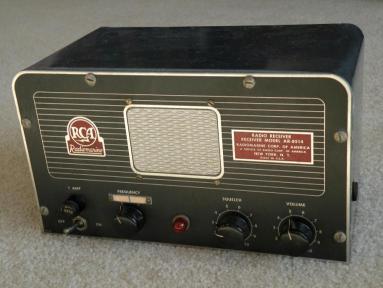
Radiomarine Corporation of America
Miniature of a RMCA sign
In 1919 the government assisted by GE engineered the formation of RCA to take over the American interests of the Marconi Company. At its inception GE owned at least 80% of the stock in the new company with the Marconi owning the remainder. The new RCA was initially a communications company, though broadcasting and the manufacturing of tubes and broadcast equipment soon over-shadowed the communications operations. According to George C. Oslin's book The Story of Telecommunications RCA's Radiomarine Corporation of America was formed in 1927.
Radio Broadcasting Magazine - May 1928 states: RADIOMARINE CORPORATION ORGANIZED - The ship-to-shore marine radio communications of the Radio Corporation of America were transferred to a new subsidiary, the Radiomarine Corporation with which was combined the Independent Wireless Company. Charles J. Pannill, former president of the Independent, is now vice-president and general manager of Radiomarine and J. P. Duffy, for years superintendent of the New York division of RCA marine, has been appointed superintendent of operations. Thanks to Robert Brown of MRHS for alerting me to this article about Radiomarine's ending, and thanks to World Radio History for preserving it.
RMCA was one of the prime providers of marine communications equipment and services for more than 40 years. It appears that on the lakes both RMCA and Lorain Electronics gear were the most popular with Lorain having the top position. On the rivers one ex-serviceman indicated that most of the AM gear that he serviced was RMCA brand. However, some of the early AM gear was Western Electric and Dennis Widdows, who did service work for Lorain from a Chicago base, stated that in addition to working on the "lakers" he went down the Illinois River servicing boat gear - probably Lorain.
The Great Lakes Cruise ships the SS South American, SS North American and the SS Alabama each had a RMCA ET-8031 system to support multichannel AM transmission and receiving. The system had 6 receivers, a motor-generator power supply, and a coil switching transmitter housed in a large cabinet. The system was operated from a control panel that could be located anywhere on the ship. Tom Drake who served as radio op on these vessels provided the 8031 control head and cabinet images that are shown below. They are from the manual for this system.
About 1944-5, RCA created an illustrated sales-pitch document profiling its capabilities for the Russian Peoples Commissariat of Electrical Industry. Someone with foresight saved this document and the significant pages are available, in PDF form, at: http://www.skywaves.ar88.net/Docs- the website of Al Klase - N3FRQ. My thanks to Al for permitting me to host this 19-page extract of RMCA data.
Here's a link to the manual for the RMCA ET 8023 Radio-Telegraph Transmitter.
Here are three pages from a 1939-40 brochure promoting several RMCA Radiotelephone units: Page 1 -- Page 2 -- Page 3 (ET8020)
Don't have a photo of it, but here's a 1946 ad for the RMCA ET-8027 .
LA8AK's RMCA AR 8503 VLF receiver page is
now only available via the Wayback Machine.
Tom Drake provided this RMCA AR 8506 Manual -- and here's link to some additional service
info. for it.
RCA IP-501A Receiver |
RMCA CRM-4615-3 Receiver |
|---|---|
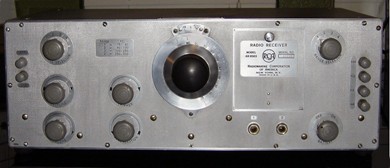 RMCA AR-8503 Receiver |
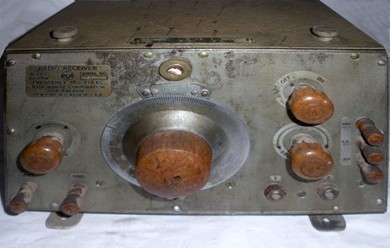 RMCA AR-8504 |
|---|---|
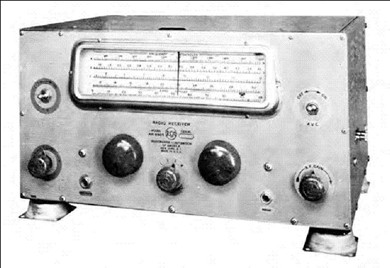 RMCA AR-8505 Receiver |
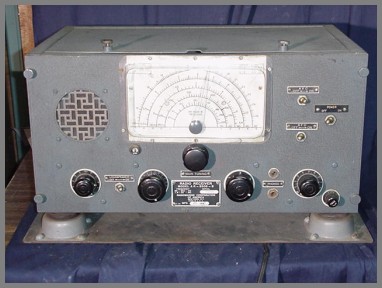 RMCA
10 tube Superhetrodyne RX Model 8506 - ca. 1940s.
Covered from
85KHz to
550KHz & 1.9 to 25 MHz |
|---|---|
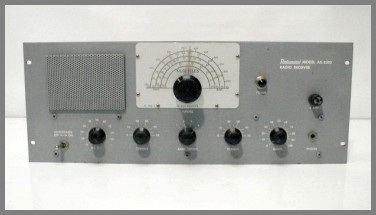 The RMCA AR 8510 is a 5 tube regenerative
Rx, covers 15-650 KHz in 4 bands and operates from 120 V DC. |
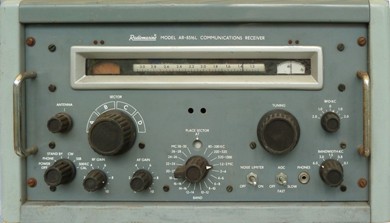 RMCA AR-8516L Receiver |
|---|---|
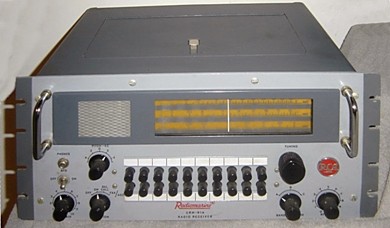 RMCA CRM-R1A Receiver |
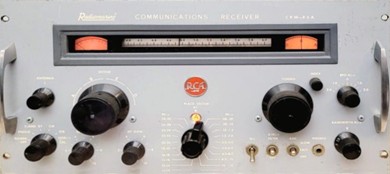 RMCA CRM-R6A Receiver |
|---|---|
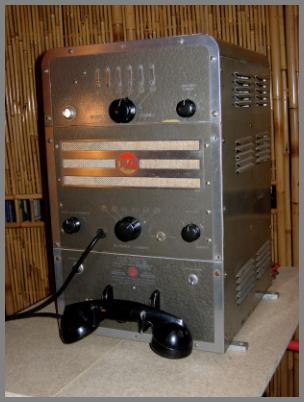 |
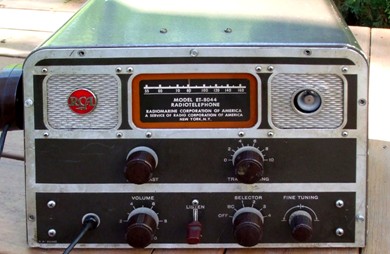 Above:
RMCA ET-8044 rig with a tunable receiver. Likely
intended more for pleasure boat use than for commercial service. |
|---|---|
 AR-8711 |
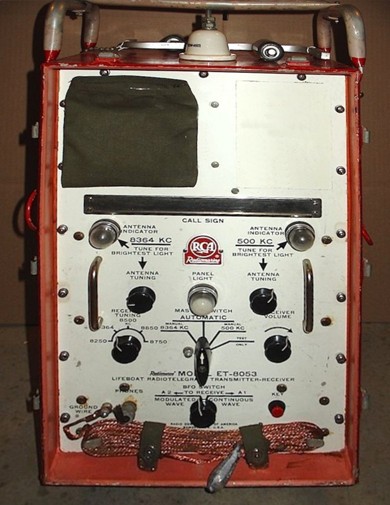 Lifeboat Emergency CW rig ET-8053 |
|---|---|
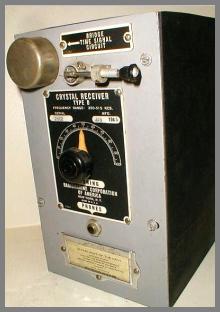 RMCA Backup/Emergency LF Xtal receiver - ca. 1944. They worked since Morse code was actually a modulated AM signal that was keyed on and off. |
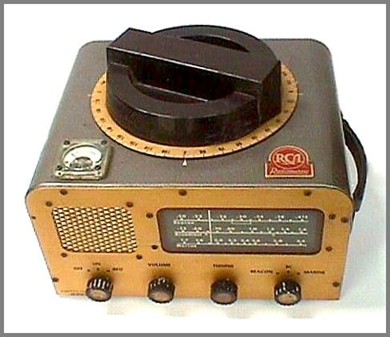 AR-8712 direction finding receiver. |
|---|---|
RMCA CRM-D1B Receiver |
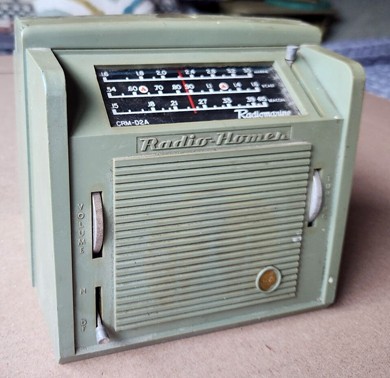 RMCA CRM-D2A Drrection-Finding Receiver |
|---|---|
Here's an external link to another RMCA receiver, a superhet, the AR-8507, and a link to a photo of what appears to be a RMCA crystal controlled receiver. Model number unknown.
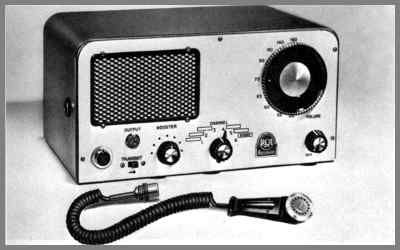 Above is a RCMA Model 8059 1950s vintage 6 channel AM unit which included a BC band receiver.
|
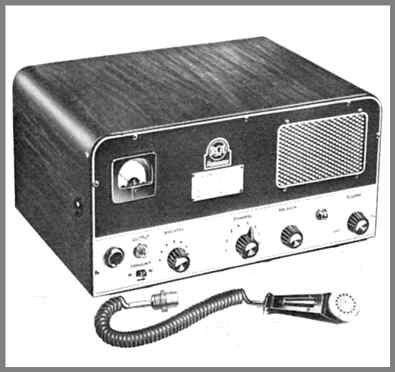 |
|---|---|
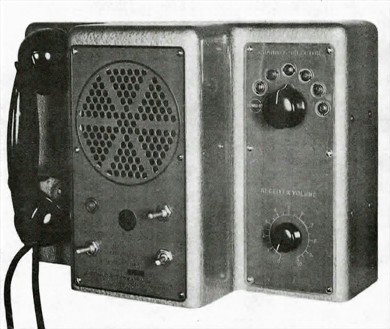 RMCA ET-8031 6-Channel Control Head |

|
|---|---|
Here's
an early version RCA AC powered SSB station for use on
larger craft. - Mid-1960s? |
This 1951
ad by RCMA shows one of their shipboard AM units as well as information on
their communications services for the Mississippi River system.
|
|---|---|
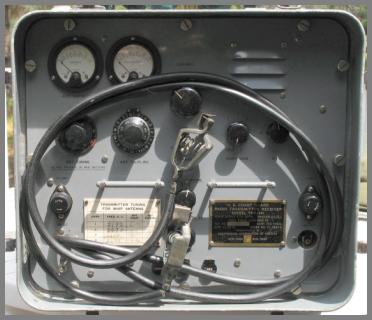 |
Ken Goodhue, WD6AOB, supplied the photo of the unit on the left. According to ex-coastie, W8SU, these were used everywhere, light houses, surf boats, 40 foot motor boats for CG inter communications. A carbon mike was used for AM, and power was from a 6V. battery via a dynamotor in the power supply, or by normal 115V AC. The brass plate on the front panel has the following information on it: U.S. Coastguard Radio Transmitter Receiver Model TRP-141, Power output 5/10 Watts emission A3/A1, Frequency range 2000-9000KC. Serial No. 25. Cont. TCG-37524. Date 12/30/47. Order No. CC 8657-C. Manufactured by Radio Marine Corporation of America, New York, New York Bob Ballantine, W8SU, supplied this photo of the 1932 version of this type of unit. Nomenclature unknown. |
|---|---|
RMCA Cruisephone35 |
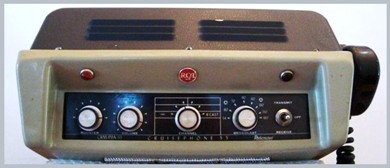 RMCA Cruisephone55 |
|---|---|
Patrick Jankowiak, KD5OEI has 21 detailed images of a RMCA Xmtr. manufactured for the Coast Guard in 1955 on his very interesting web site.
Here's a 1952 article with four photos of RMCA's equipment offerings at that years National Motor Boat Show. Thanks to Charles Eckard for this.
Thanks to Bartley Cardon, KD1KG here's a nice image of the RMCA radio operator's console on the SS John W. Brown Liberty Ship This gear was intended for high seas ships and is more elaborate than was used on the Great Lakes.

